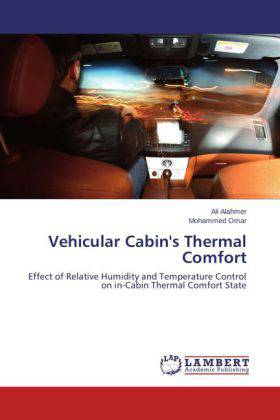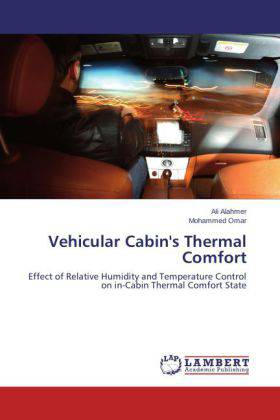
- Afhalen na 1 uur in een winkel met voorraad
- Gratis thuislevering in België vanaf € 30
- Ruim aanbod met 7 miljoen producten
- Afhalen na 1 uur in een winkel met voorraad
- Gratis thuislevering in België vanaf € 30
- Ruim aanbod met 7 miljoen producten
Zoeken
Vehicular Cabin's Thermal Comfort
Effect of Relative Humidity and Temperature Control on in-Cabin Thermal Comfort State
Ali Alahmer, Mohammed Omar
Paperback | Engels
€ 77,45
+ 154 punten
Omschrijving
This book discusses the effect of manipulating the RH levels inside vehicular cabins on the thermal comfort and human occupants thermal sensation. Three different techniques are used to investigate this effect. Firstly, thermodynamic and psychometric analyses are used to incorporate the effect of changing RH along with the dry bulb temperature on the human comfort window. A practical system implementation is also discussed in terms of an evaporative cooler design. Secondly, a 3-D finite difference simulation is used to predict the RH effects on the thermal sensation metrics. Thirdly, the analysis and modeling of the vehicular thermal comfort parameters is conducted using a set of designed experiments aided by thermography measurements. Finally, this work has developed the passenger thermal-comfort psychometric zones during summer and winter periods using Berkeley and Fanger models.
Specificaties
Betrokkenen
- Auteur(s):
- Uitgeverij:
Inhoud
- Aantal bladzijden:
- 228
- Taal:
- Engels
Eigenschappen
- Productcode (EAN):
- 9783659167119
- Verschijningsdatum:
- 25/02/2014
- Uitvoering:
- Paperback
- Afmetingen:
- 150 mm x 220 mm
- Gewicht:
- 340 g

Alleen bij Standaard Boekhandel
+ 154 punten op je klantenkaart van Standaard Boekhandel
Beoordelingen
We publiceren alleen reviews die voldoen aan de voorwaarden voor reviews. Bekijk onze voorwaarden voor reviews.











